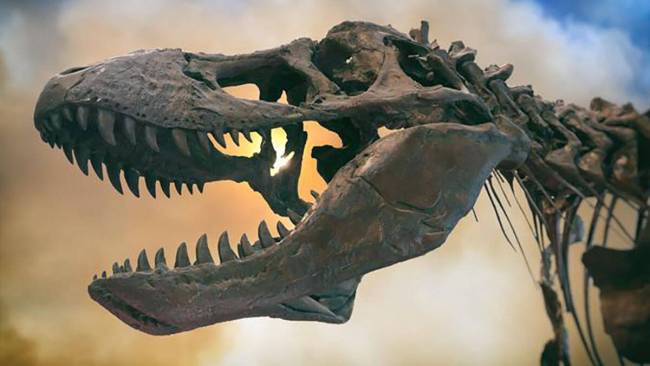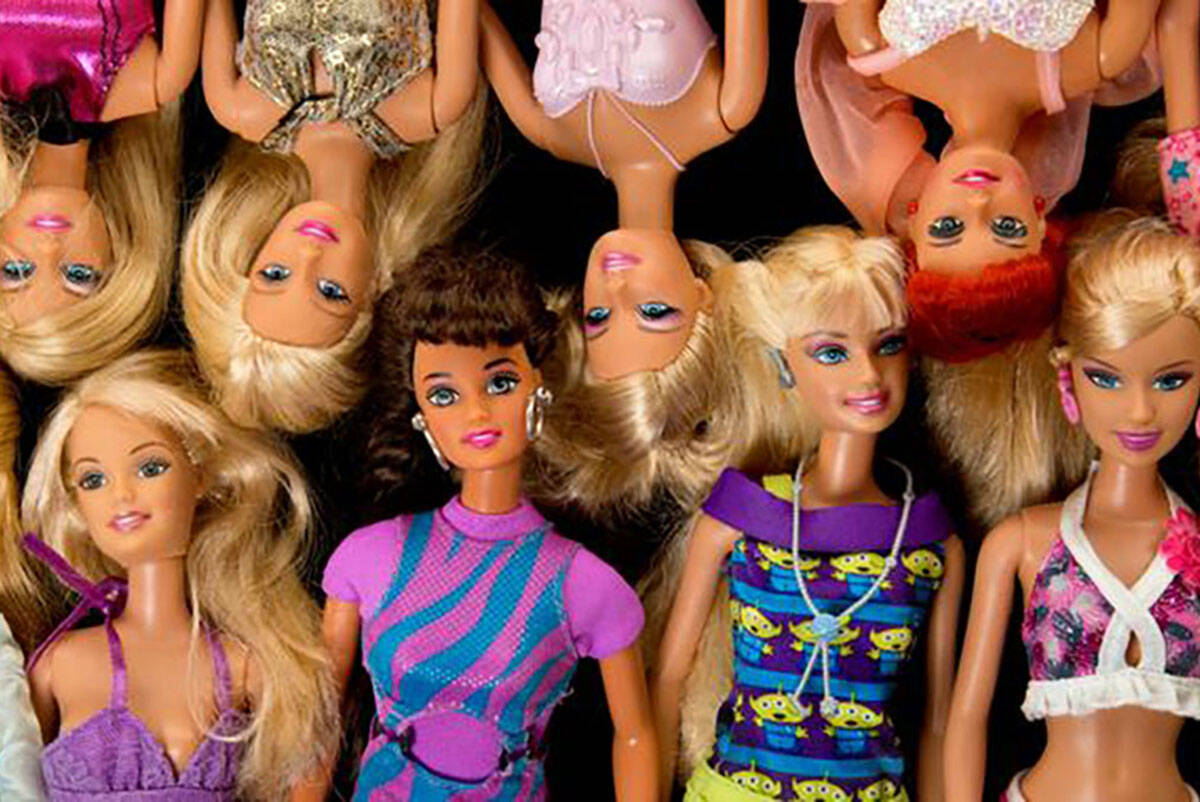What are the wildest things your taxes are paying for?
Ever wonder where all that money taken out of your paycheck goes? You might be surprised to find out where some of your tax dollars are going.
Write off your mileage? The IRS expands the deduction for fuel costs in 2023
More: 12 types of passive income that aren’t taxable
Some of your taxes are used to fund civic projects, health research and other key investments that benefit mankind. But some of your tax dollars are used for unusual expenses — including housing chimpanzees and buying robotic flowers.
As it turns out, there are both good and extremely bad ways your tax dollars can be spent.
Putting fish on treadmills
In 2017, Sen. Jeff Flake of Arizona released a list of the most outlandish tax splurges he could find. One involved the Scripps Institution of Oceanography in San Diego, which used a $560,000 grant from the National Science Foundation to force fish to exercise to exhaustion on treadmills as part of a 2009 study.
The scientists chose mudskippers because of their unique ability to use their fins like legs for extended periods of time when out of the water. The exhausted fish were then given 48 hours to rest before hitting the gym again. Different oxygen levels were used as variables to test their progress and recovery.

Proving that gingerbread houses are earthquake-proof
A $150,000 grant from the Institute of Museum and Library Services funded a workshop called “How Does the Cookie Crumble?” The Oregon Museum of Science and Industry took gingerbread houses designed to be earthquake-resistant and put them to the test on machines that replicated major temblors. Participants got to take their sweet, sugary houses with them. The workshop was part of the OMSI’s annual “Gingerbread Adventures” event.
Turning computers into couch potatoes
Your tax dollars paid for computers to binge-watch hundreds of hours of television during a 2016 study — as if you weren’t already burning through your paycheck on subscription services.
The program — which was funded by a $460,000 grant from the National Science Foundation and other funds from the Department of Defense’s Office of Naval Research — was designed to train computers to both understand and predict human behavior. The results were inconclusive. But the good news is that the computers are all caught up on their favorite shows.
Finding out if playing with Barbie dolls helps with facial recognition
Researchers at the National Eye Institute and National Science Foundation conducted a $300,000 study in 2016 to find out if playing with Barbies — which was more common among the women in the study — enables women to be better at recognizing faces.
Since Barbies are made with different faces, scientists thought that women might have a gender-based advantage when it comes to memorizing how faces look. It turns out that they likely do not. So, that’s money that came out of your paycheck for no reason.

Proving that frat brothers like to party
The National Institute on Alcohol Abuse and Alcoholism used a $5 million grant to fund a 2016 study at the National Institutes of Health on the reveling habits of college students. The study revealed what anyone who went to college could tell you for free: Members of fraternities and sororities drink more on average than the larger university population. This is especially true on days of big sporting events.
Oh, and members of fraternities and sororities tend to sleep in later, too.
NASA research on how religious groups would respond to aliens
Your tax dollars helped NASA examine how the world’s religions might react if humans make contact with extraterrestrial lifeforms. The Center of Theological Inquiry used a $1.1 million grant from the NASA Astrobiology Institute in 2016 to study potential reactions by religious leaders and populations to the hypothetical future discovery of life beyond Earth and how it could influence their beliefs about the origins and meaning of life.
NASA research on the affect of global warming on wine
In 2016, NASA participated in an $88,000 study that examined the effect of global warming on wine in France. Some of the best vintages in history have come out of France in recent years, and scientists believe there is a connection between increased temperatures and more robust, flavorful wines. The study combined modern data gathered by satellite imagery with historical data, like records kept by French monks who controlled vast vineyards near monasteries dating back to 1300.
Proving that fear of pain is why you’re afraid of the dentist
A $3.5 million study conducted by the National Institutes of Health in 2016 examined why half of Americans report being afraid of the dentist, with as many as 20% reaching the level of a serious phobia. If you guessed that it might have something to do with the use of a drill to bore into bones embedded in your skull, you are correct. The most commonly cited source of dental anxiety is fear of pain.
Paying for shady doctors to stay in business
Through the Medicaid, Medicare and CHIP programs, the federal government paid $3 million to medical “professionals” who had been banned from public healthcare programs, according to the Congressional Budget Office. Some of these people committed fraud. Others performed unnecessary procedures to pad their invoices. At least 100 doctors were supposed to be removed for reasons relating to criminal charges, but they kept practicing — and collecting your tax dollars.
Subsidizing massive agricultural corporations
Agricultural subsidies were designed to support farmers during a time when vast numbers of Americans worked in agriculture, particularly during and after the Dust Bowl era and Great Depression. Today, however, the number of farmers has dropped significantly. But the agriculture lobby is as big as ever and the federal government doles out tens of millions of tax dollars — the vast majority of which go to the biggest companies — for marketing, insurance, research and simply to overproduce.
Studying monkey drool
An experiment conducted at the State University of New York at Buffalo, which was funded by an $817,000 grant from the National Institutes of Health, took a close look at primate saliva. The 2016 study compared human drool to that of a wide variety of apes, monkeys and their relatives in hopes of identifying when human saliva evolved into its current form.
Researching truffles and caviar
You probably can’t afford the truffles and caviar they serve at five-star restaurants — but you’re paying for them anyway. In 2016, the USDA used $34,210 in taxpayer money to conduct “feasibility studies” on producing pricey truffles in the U.S., which has so far been an elusive task. And in 2015, nearly $52,000 was spent on studying the feasibility of “value-added fish products,” including herring caviar.
Turning the world into a giant network of US bases
According to CNBC, the U.S. spends around $156 billion a year to maintain 800 military bases in 80 countries. Many, of course, are necessary and relevant. But many others — like the 174 bases in Germany, 113 in Japan and 83 in South Korea — are post-World War II Cold War relics that cost the U.S. money in a couple of ways: to maintain the bases and to pay the host countries for the privilege of keeping them there. Virtually all military experts agree there’s a huge glut of these bases and, in some cases, the bases hurt American interests more than help them.
Other mysterious defense spending
A gargantuan 25,000-employee Pentagon agency that Politico nicknamed the “Walmart of the military” processes more than 100,000 military orders a day. An outside audit conducted in December 2017 revealed $465 million in misstatements in the agency’s books and insufficient documentation — or none at all — for another $384 million…and that’s just one agency.

Finding out if dinosaurs could sing
The National Science Foundation conducted a $450,000 study in 2016 to determine whether or not dinosaurs could chirp and sing like birds, which are their closest living relatives. The study concluded that, despite what you might have learned from “Barney,” dinosaurs did not have the vocal structure required to sing.
Buying robotic flowers
The National Institutes of Health spent $1.3 million in 2015 on flobots, which are, as the name implies, robotic flowers. Flobots use a sugar solution that mimics nectar, which is used to entice bees. Researchers use flobots to study the behavior of bees, which they say interact with flobots in a fashion similar to how they interact with real flowers.
Inflating sugar prices
Like agricultural subsidies, America’s sugar subsidy program is outdated, expensive and often counterproductive. Without it, America could save up to $4 billion a year, according to MarketWatch. The sugar subsidy program is used to set price minimums and artificially inflate sugar prices in the United States.
Room and board for chimps
The National Institutes of Health (NIH) once used chimpanzees in biomedical research projects, but eventually stopped the practice. The 139 chimps that were liberated from the NIH’s experiments have been retired to the National Center for Chimpanzee Care. About $18,700 is spent per chimp per year for food, shelter and other costs — that’s enough to put each chimp through college every single year.
Fancy hotel rooms for secret service agents
A February 2019 report from the Government Accountability Office found that President Donald Trump’s trips to his private Mar-a-Lago beach club in Palm Beach, Florida, cost taxpayers about $3.4 million per trip. The report stated that $60,000 was paid to Mar-a-Lago for four separate trips, the majority of which was for rooms at the resort for Secret Service agents.
$1,200 coffee mugs
You might feel like you overpay every time you drink Starbucks, but those $6 lattes are chump change compared to what the U.S. Air Force has spent on its caffeine fix. The 60th Aerial Port Squadron at Travis Air Force base in California spent $56,000 on dozens of metal coffee cups and their replacements over the course of three years, Fox News reported. The cups — which cost $1,200 each — are able to reheat coffee and tea on air refueling tankers in flight.
Studying border town bars
The National Institutes of Health provided $333,210 in funding for a 2017 study on the drinking behaviors of Mexican-Americans who live in border towns. Part of the study involved “unobtrusive systemic observations” conducted in select bars in U.S. border cities, Valley cities and Mexicali. The researchers hypothesized that bars in Mexicali would have “more patrons, more dancing, louder music, as well as lower-priced alcohol and later closing times compared to venues in the U.S. border towns and Central Valley towns.” So, yes, some lucky scientists got paid with your tax dollars to hang out at bars.
Studying dance clubs
The NIH apparently loves to pay researchers to study partying. The government organization granted $180,304 to the Pacific Institute for Research and Evaluation in 2014 to study “high-risk behaviors (excessive alcohol use, drug use, physical and/or sexual aggression, and unsafe exit behaviors-e.g., drinking and driving, riding with a drinking driver) of young adults who patronize clubs.”
Maintaining a self-cleaning toilet
Washington, D.C.’s public transportation system has long been a thorn in the side of many commuters, and the way they have spent some of their funds just adds insult to injury. A 2019 Office of the Inspector General Report on the activities of the Washington Metropolitan Area Transit Authority found that the WMATA spent approximately $500,000 maintaining a single self-cleaning toilet located at one of its metro stations. If that’s not bad enough, the toilet doesn’t even work — it has been out of service since 2017.
Getting zebrafish hooked on nicotine
The American government provided funds across the pond for an unconventional smoking study. In 2018 and 2019, the NIH gave $708,466 worth of grants to support researchers at the University of London Queen Mary and Westfield College to “exploit zebrafish” by getting them addicted to nicotine. The fishy study aims “to identify genes affecting vulnerability to addiction by screening lines of mutagenized zebrafish for core behaviors associated with addiction: sensitivity to drug reward and impulsivity.”
A statue made by Bob Dylan
The U.S. State Department spent $84,375 for a 4-foot iron sculpture made by singer-songwriter Bob Dylan, Foreign Policy reported. The statue was purchased under the department’s Art in Embassies program, which places American artwork at its embassies around the world to showcase U.S. culture. The statue was purchased to be displayed at the U.S. embassy in Mozambique.
Improving Serbian cheese
The U.S. Agency for International Development has dedicated $22 million in funding to support the long-term economic and social development of cities and municipalities in Serbia, and part of that funding has gone toward a modern cheese production facility in the rural area of Pester. The area is specifically known for its Sjenica cheese, which is made from raw, unprocessed milk, salt and rennet. At the facility, the USAID trained the staff on how to make cheese that’s up to international standards.
A luxurious bus stop
In 2013, Arlington, Virginia, rolled out its first “super stop” bus stop that featured a stainless steel design, heated concrete floors and a state-of-the-art computerized bus schedule. The luxurious bus stop cost $1 million, 80% of which was paid for with federal and state transportation funds, The Washington Post reported.
Researching romance novels
Sometimes love does cost a thing. In 2012, the National Endowment for the Humanities granted $250,000 for the creation of a website dedicated to romance novels. According to the grant, the site — “combining 600 video segments and 150 scholarly essays with games and primary sources — will shape and facilitate a substantive discussion about the writing, production and consumption of popular romance. It will engage a mass audience in [a] thoughtful and provocative exploration of the roles romance narratives play in popular culture and individual lives.”

Watching people play World of Warcraft
A UC Irvine professor was granted $100,000 from the National Science Foundation in 2008 to study how players collaborate while playing “World of Warcraft.” The study focused particularly on the differences in the details American gamers and Chinese gamers pay attention to.
A Super Bowl ad
If you want to get the attention of a ton of Americans at once, advertise during the Super Bowl. That’s what the Census Bureau intended to do by paying $2.5 million for a commercial during the 2010 game, CBS News reported. Census officials hoped the ad would convince more people to mail in their form.
Zoo poetry
In 2004, New York’s Central Park Zoo hired a poet in residence who was paid to create poems with environmental themes to educate its visitors. This unusual job was funded with a $90,000 grant from the Institute of Museum and Library Services, The New York Times reported.
Keeping Grateful Dead memorabilia alive
Someone at the federal government’s Institute of Museum and Library Services is clearly a Deadhead. In 2009, UC Santa Cruz received $615,175 in federal funding to help digitize its Grateful Dead archive. The digitization project would allow people around the world to access “materials related to the phenomena of the Deadheads, the band’s extensive social network of devoted fans, and the Grateful Dead’s highly unusual and successful musical business ventures,” the university website stated.
More From GOBankingRates
The 10 best balance transfer credit cards for 2023
8 steps to improve your finances in one year
Gabrielle Olya contributed to the reporting for this article.
This article originally appeared on GOBankingRates.com: The wildest things your taxes are paying for


















